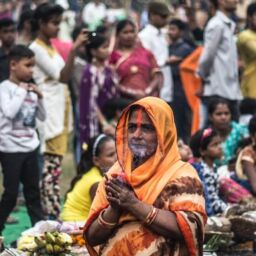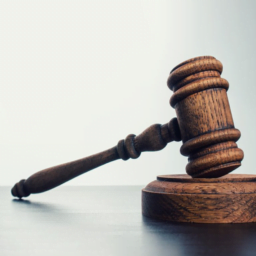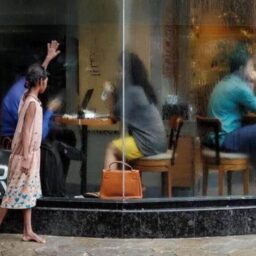INTRODUCTION
We have often heard about the sale and purchase of goods, and it is vital for the working of the market, which is often called the economic cycle. It is not odd to hear about humans’ sale and purchase for money, and this mechanism for sale and purchase of humans is called “Human Trafficking.”
They are sold for various activities such as sexual exploitations, to work as free labour, or are kept as a slave. Once any person got trapped in illicit human trading, then the chance for escape is very less. If, however, they escaped by any means or mode, coming out of trauma is a big deal in itself.
CHILDREN AND WOMEN: EASY TARGET FOR TRAFFICKING
This inhumane activity is not bounded to any age, gender, or creed. The easy target for human trafficking is the children and women. Talking in terms of children, they can be easily manipulated, anyone can gain their trust and after gaining their trust or manipulating them, the offenders commit their crime and sell those children at high prices to dealers, who deals in the sale and purchase of humans, or they directly send the trafficked people to clients, without any intervention of dealer
In the year 2016, about 40.3 million people became the victim of this modern slavery. Out of Every 4 Victims of this modern slavery, 1 is children. These facts and figures were published by the International Labor organization in their report titled Global Estimates of Modern Slavery: Forced Labor and Forced Marriage[1]
LAWS RELATED TO HUMAN TRAFFICKING
The Indian legal system has stringent laws against this inhumane activity, that is human trafficking such as the Immoral Traffic (Prevention) Act 1956 (ITPA), which contains the relevant provisions/Sections for preventing human trafficking for sexual exploitation. Several states have their legislative statutes related to this offence of human trafficking such as the “The Punjab Prevention of Human Smuggling Act, 2012”, which prohibits human trading. [2]
THE IMMORAL TRAFFIC (PREVENTION) ACT, 1956
India in the year 1950 signed an international convention to curb or restrain human trafficking, bypassing the act, titled “The Immoral Traffic (Prevention) Act, 1956” The main aim behind this act was to make sexual exploitation a cognizable offence (means police can arrest the person who is committing the offence of sexual exploitation, without arrest warrant) for both man and woman. The immoral traffic (prevention) act, 1956 contained 25 sections and one schedule.[3]
PUNJAB PREVENTION OF HUMAN SMUGGLING ACT, 2012
The sole objective behind creating this statute was to keep a check and restrict the fraudulent and illegal practices of the individuals, who are involved in the human smuggling activity in the state of Punjab.
- Section 2(g):[4] defines the term “Human smuggling” as any person, who is involved in the transportation of persons outside the country by receiving the money from the family members of the person, who is being exported or transported by the means of cheating, deceiving or inducing.
- Section 13(1): [5] defines the penalty that whosoever flout the provisions contained in this act or he/she either keeps or uses the device for the objective of human smuggling, will be liable for jail, not less than three years, subject to extension up to seven years and fine to be imposed, which is subjected to extension up to five lakh rupees.
THE INDIAN PENAL CODE 1860
The Indian Penal code 1860, which is substantive law, also cover some sections such as:
- Section 370[6] states the offence of Purchasing or disposing of any person as a slave, whosoever found buying and selling or import and export of any person as a slave, commits an offence under this section and the punishment for this act is that person who is indulged in these activities will be jailed for a period, which may extend up to seven years and will also attract a penalty in form of fine.
- Section 372 of IPC,[7] which criminalizes the sale of minor girls for the sole objective of prostitution, falls under the ambit of sexual exploitation. Section 373 criminalizes the act of purchasing minor girls for the objective of prostitution.
- Section 374[8] prohibits forced labour, anyone found indulged in these activities will be jailed for a period, which is subjected to an extension of up to one year or it will attract a fine, or both can be imposed.
WHO ARE THE PERPETRATORS?
If we talk about the classification of perpetrators on the basis of gender composition, then males are in majority (60%) of committing these offences as compared to women, which amounts to near about 40%, sourced the UNODC, Global Report on Trafficking in Persons 2020
Near about 36% of women were convicted on the grounds of involvement in Human trafficking offence in the year 2018. It is a quite shocking fact that only 1% of the persons are convicted, who are involved in the trafficking. Such a low conviction rate raises an alarming situation.[9]
CONCLUSION
Human trafficking itself implies the meaning “to trade the humans by humans, for money”. This social evil has deep roots in our society, which need to be eradicated as soon as possible. Despite having stringent laws against human trafficking, this offence is still committed on a large scale, the reason for the same is the low conviction rate.
There should be strict action against those goons who act as dealers and transport, humans as a slave for various purpose, it may be sexual exploitation or forced labour. Several factors are responsible for influencing these trades, it may be social, political, or economic factors
As per Indian history, there was the existence of slaves, who worked for their masters, women slaves were there, who fulfilled the sexual pleasure of their masters. Though this slavery practice was abolished, this again came into existence in the form of forced labour, which is a subpart of Human Trafficking.
Author(s) Name: Deepak Kumar Chaurasia (Student, Chandigarh University)
References:
[1] Global estimates of modern slavery: Forced labour and forced marriage, International Labour Office (ILO), Geneva, 2017, ISBN: 978-92-2-130132-5 (web pdf).
[2] Human Trafficking, Consular, Passport and Visa Division, Ministry of External Affairs, available at: https://mea.gov.in/human-trafficking.htm (Last accessed on 21 June 2021).
[3] The Immoral Traffic (Prevention) Act, 1956, No. 104, Acts of Parliament, 1956.
[4] The Punjab Prevention of Human Smuggling Act, 2012, § 2(g), No. 2, Acts of Punjab State Legislature of 2012.
[5] The Punjab Prevention of Human Smuggling Act, 2012, § 13(1), No. 2, Acts of Punjab State Legislature of 2012.
[6] The Indian Penal Code, 1860, § 370, No. 45, Acts of Parliament, 1860.
[7] The Indian Penal Code, 1860, § 372, No. 45, Acts of Parliament, 1860.
[8] The Indian Penal Code, 1860, § 374, No. 45, Acts of Parliament, 1860.
[9] UNODC, Global Report on Trafficking in Persons 2020 (United Nations publication, Sales No. E.20.IV.3).















